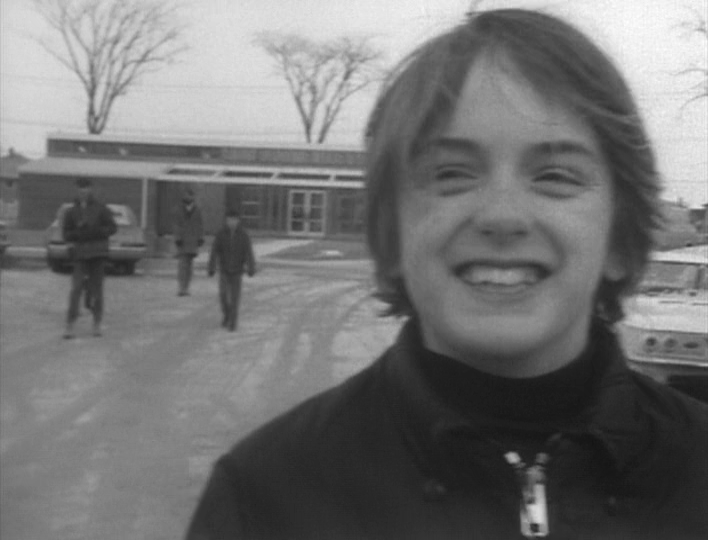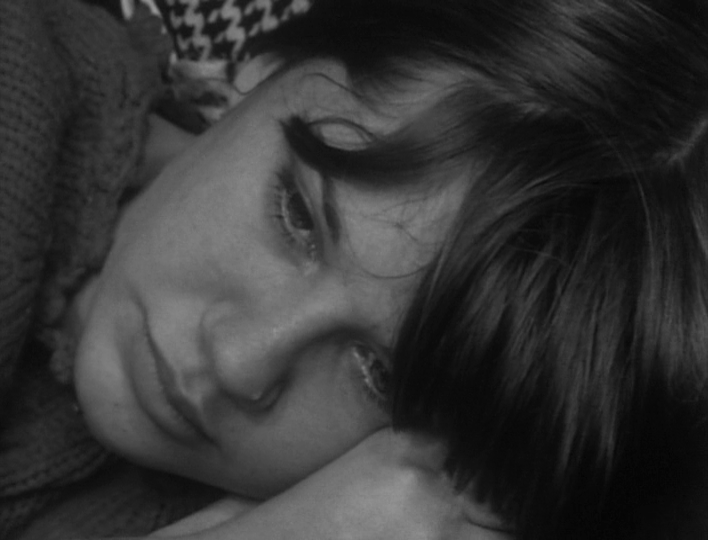|

Year: 1967
Country: Canada
Director: Allan King
Cast: Martin Fischer
IMBD: Link
Language : English
Subtitles : English, Italian

In the aftermath of World War II, mental health treatment in Canada relied heavily on institutionalization. Large asylums and psychiatric hospitals were established, often resulting in neglect and mistreatment due to overcrowding and limited understanding of mental health disorders. One notable Canadian mental asylum that warrants discussion is the Homewood Retreat in Guelph, Ontario. Established in 1883, Homewood was one of Canada’s largest and most well-known psychiatric hospitals. In its early years, the asylum followed the prevailing institutional model of mental health care, focusing on custodial care and restraint of patients. Overcrowding, understaffing, and limited resources were significant challenges faced by Homewood, resulting in substandard conditions and neglectful treatment of patients. However, as the understanding of mental health evolved, Homewood began to adopt more progressive approaches, such as occupational therapy and individualized treatment plans. Throughout its history, the asylum witnessed both advancements and controversies in its treatment of patients, reflecting the broader evolution of mental health care in Canada. The emergence of smaller residential treatment centers, such as Warrendale, marked a shift toward community-based care during the 1950s and 1960s.
“Warrendale” adopts a cinéma vérité style, capturing the raw and unscripted reality of emotionally disturbed children at the center. The film provides an intimate portrayal of their struggles, triumphs, and the dedicated efforts of the center’s staff. It immerses viewers in the daily routines, conflicts, and emotional journeys of these children, evoking empathy and challenging preconceived notions about mental illness. One of the key characteristics of cinéma vérité is the unobtrusive presence of the filmmakers. In “Warrendale,” Allan King and his crew blend into the background, allowing the children and staff at the Warrendale Residential Treatment Center to behave naturally and uninterrupted. This unobtrusive approach fosters a sense of authenticity, enabling the film to capture candid moments and genuine emotional responses.
Unlike traditional documentaries, cinéma vérité embraces imperfections, such as camera shakiness, blurry shots, and background noise. These elements contribute to the authenticity of “Warrendale” by reminding viewers that they are witnessing real-life events. The lack of polish and slick production values further emphasizes the rawness and unfiltered nature of the film. Cinéma vérité seeks to present an unadulterated truth, often challenging conventional narrative structures. In “Warrendale,” the film confronts viewers with the harsh realities of emotional disturbance and the flaws of the mental health care system at the time. By foregoing a traditional narrative arc and instead presenting unfiltered moments, “Warrendale” forces viewers to confront uncomfortable truths and prompts critical reflection. The cinéma vérité style enhances the impact and enduring significance of “Warrendale” as a groundbreaking documentary.
Upon its release, “Warrendale” sparked controversy due to its uncompromising depiction of emotionally disturbed children in distressing situations. Critics raised concerns about the breach of privacy and the potential exploitation of vulnerable individuals. The ethical implications of documenting such sensitive content, particularly without explicit consent, were fiercely debated.
Despite the controversy, “Warrendale” achieved critical acclaim and played a significant role in shaping public perception of mental health care. The documentary shattered the prevailing stigma surrounding mental illness by humanizing its subjects and raising awareness of the challenges they faced. By exposing the shortcomings of institutionalization, the film fueled discussions about the need for more compassionate and individualized approaches to treatment.
“Warrendale” had a tangible impact on mental health care policy in Canada. It contributed to a paradigm shift away from large institutions toward community-based care models that emphasized personalized treatment and rehabilitation. The film’s unflinching portrayal of the realities faced by emotionally disturbed children paved the way for subsequent documentaries and media projects that shed light on mental health issues, ultimately leading to broader social and policy changes.
(Noah Young)

[ About file ]
Name: Warrendale.Allan King.1967.DVDRip.mkv
Date: Tue, 14 May 2024 02:53:01 +0200
Size: 1,562,399,348 bytes (1490.02013 MiB)
[ Magic ]
File type: Matroska data
File type: EBML file, creator matroska
[ Generic infos ]
Duration: 01:40:47 (6047.296 s)
Container: matroska
Production date: Tue, 08 Nov 2016 18:35:15 +0200
Total tracks: 3
Track nr. 1: video (V_MPEG4/ISO/AVC) {und}
Track nr. 2: audio (A_AC3) {eng}
Track nr. 3: subtitle (S_VOBSUB) {eng}
Muxing library: libebml v1.3.4 + libmatroska v1.4.5
Writing application: mkvmerge v9.5.0 ('Quiet Fire') 32bit
[ Relevant data ]
Resolution: 708 x 480
Width: multiple of 4
Height: multiple of 32
Average DRF: 20.153162
Standard deviation: 2.406657
Std. dev. weighted mean: 2.353443
[ Video track ]
Codec ID: V_MPEG4/ISO/AVC
Resolution: 708 x 480
Display resolution: 708 x 540 (pixels)
Frame aspect ratio: 59:40 = 1.475
Pixel aspect ratio: 8:9 = 0.888889
Display aspect ratio: 59:45 = 1.311111
Framerate: 23.976024 fps
Stream size: 1,413,604,081 bytes (1348.117906 MiB)
Duration (bs): 01:40:47 (6047.291202 s)
Bitrate (bs): 1870.065831 kbps
Qf: 0.229512
[ Audio track ]
Codec ID: A_AC3
Sampling frequency: 48000 Hz
Channels: 1
Stream size: 145,135,104 bytes (138.411621 MiB)
Bitstream type (bs): AC3
Frames (bs): 188,978
Duration (bs): 01:40:47 (6047.296 s)
Chunk-aligned (bs): Yes
Bitrate (bs): 192 kbps CBR
Sampling frequency (bs): 48000 Hz
Mode (bs): mono
[ Video bitstream ]
Bitstream type: MPEG-4 Part 10
User data: x264 | core 148 r2721 72d53ab | H.264/MPEG-4 AVC codec
User data: Copyleft 2003-2016 | http://www.videolan.org/x264.html | cabac=1
User data: ref=10 | deblock=1:-3:-3 | analyse=0x3:0x133 | me=umh | subme=9
User data: psy=1 | psy_rd=1.00:0.15 | mixed_ref=1 | me_range=28 | chroma_me=0
User data: trellis=2 | 8x8dct=1 | cqm=0 | deadzone=21,11 | fast_pskip=0
User data: chroma_qp_offset=-3 | threads=6 | lookahead_threads=1
User data: sliced_threads=0 | nr=0 | decimate=0 | interlaced=0
User data: bluray_compat=0 | constrained_intra=0 | bframes=8 | b_pyramid=2
User data: b_adapt=2 | b_bias=0 | direct=3 | weightb=1 | open_gop=0 | weightp=2
User data: keyint=240 | keyint_min=23 | scenecut=40 | intra_refresh=0
User data: rc_lookahead=60 | rc=2pass | mbtree=1 | bitrate=1870 | ratetol=3.0
User data: qcomp=0.60 | qpmin=0 | qpmax=69 | qpstep=4 | cplxblur=20.0
User data: qblur=0.5 | vbv_maxrate=14000 | vbv_bufsize=14000 | nal_hrd=none
User data: filler=0 | ip_ratio=1.40 | aq=1:1.00
SPS id: 0
Profile: [email protected]
Num ref frames: 10
Aspect ratio: Custom pixel shape (8:9 = 0.888889)
Chroma format: YUV 4:2:0
PPS id: 0 (SPS: 0)
Entropy coding type: CABAC
Weighted prediction: P slices - explicit weighted prediction
Weighted bipred idc: B slices - implicit weighted prediction
8x8dct: Yes
Total frames: 144,990
Drop/delay frames: 0
Corrupt frames: 0
P-slices: 30471 ( 21.016 %) ####
B-slices: 113848 ( 78.521 %) ################
I-slices: 671 ( 0.463 %)
SP-slices: 0 ( 0.000 %)
SI-slices: 0 ( 0.000 %)
[ DRF analysis ]
average DRF: 20.153162
standard deviation: 2.406657
max DRF: 29
DRF<2: 0 ( 0.000 %)
DRF=2: 3 ( 0.002 %)
DRF=3: 9 ( 0.006 %)
DRF=4: 15 ( 0.010 %)
DRF=5: 30 ( 0.021 %)
DRF=6: 25 ( 0.017 %)
DRF=7: 98 ( 0.068 %)
DRF=8: 47 ( 0.032 %)
DRF=9: 20 ( 0.014 %)
DRF=10: 96 ( 0.066 %)
DRF=11: 47 ( 0.032 %)
DRF=12: 72 ( 0.050 %)
DRF=13: 158 ( 0.109 %)
DRF=14: 382 ( 0.263 %)
DRF=15: 751 ( 0.518 %)
DRF=16: 2470 ( 1.704 %)
DRF=17: 10368 ( 7.151 %) #
DRF=18: 19309 ( 13.317 %) ###
DRF=19: 26609 ( 18.352 %) ####
DRF=20: 27954 ( 19.280 %) ####
DRF=21: 21827 ( 15.054 %) ###
DRF=22: 12336 ( 8.508 %) ##
DRF=23: 8173 ( 5.637 %) #
DRF=24: 6319 ( 4.358 %) #
DRF=25: 4256 ( 2.935 %) #
DRF=26: 2354 ( 1.624 %)
DRF=27: 984 ( 0.679 %)
DRF=28: 253 ( 0.174 %)
DRF=29: 25 ( 0.017 %)
DRF>29: 0 ( 0.000 %)
P-slices average DRF: 19.323586
P-slices std. deviation: 2.140893
P-slices max DRF: 28
B-slices average DRF: 20.394702
B-slices std. deviation: 2.411048
B-slices max DRF: 29
I-slices average DRF: 16.843517
I-slices std. deviation: 2.231922
I-slices max DRF: 26
This report was created by AVInaptic (01-11-2020) on 17-05-2024 00:09:09





|
|
http://tracker.opentrackr.org:1337/announce udp://tracker.opentrackr.org:1337/announce udp://open.stealth.si:80/announce udp://tracker.torrent.eu.org:451/announce udp://open.demonii.com:1337/announce udp://inferno.demonoid.is:3391/announce udp://exodus.desync.com:6969/announce https://tracker.gbitt.info:443/announce udp://opentracker.io:6969/announce udp://open.demonoid.ch:6969/announce udp://bt1.archive.org:6969/announce udp://bt2.archive.org:6969/announce udp://bubu.mapfactor.com:6969/announce udp://epider.me:6969/announce udp://explodie.org:6969/announce |

